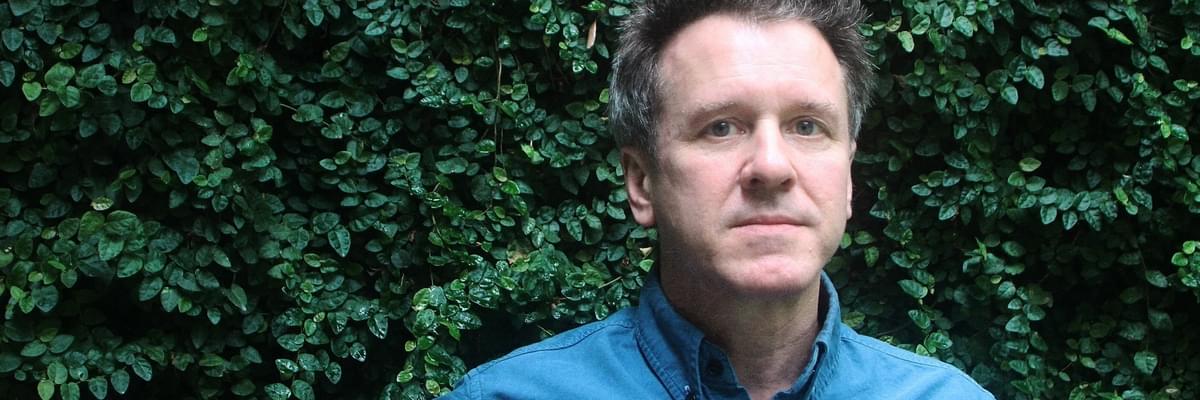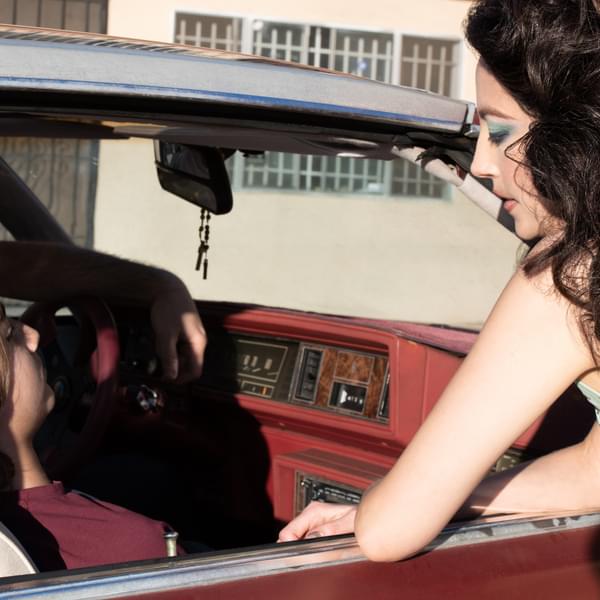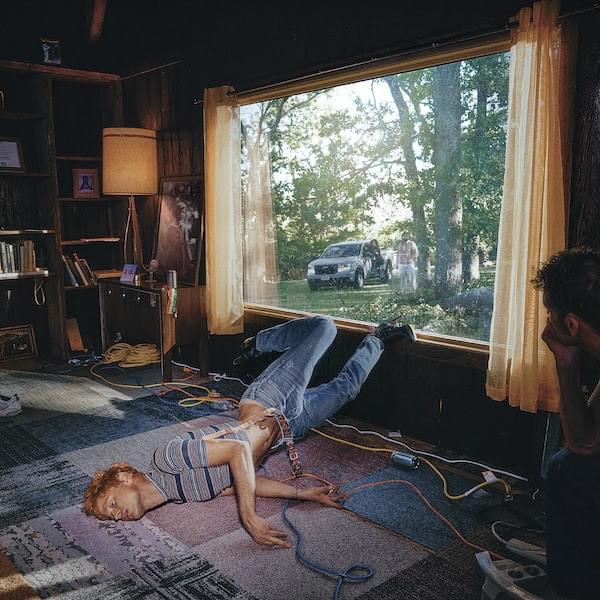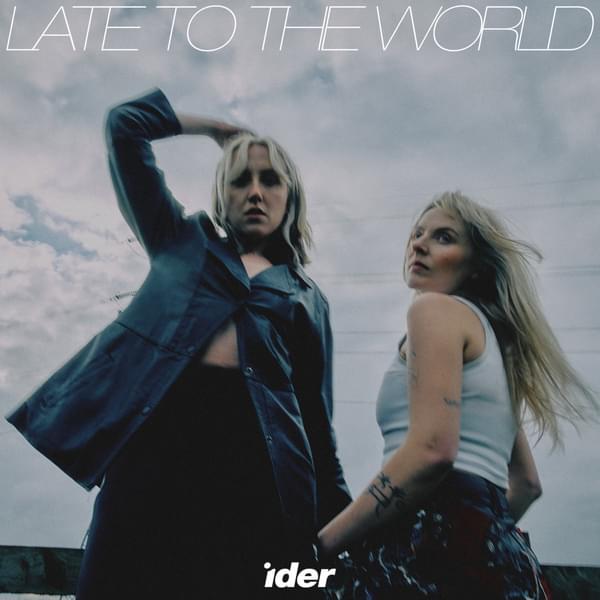
From meeting your heroes and playing it cool, to learning on the job with Yo La Tengo, Superchunk frontman and Merge Records co-founder Mac McCaughan talks Alex Wisgard through the songs that changed his life
There’s an irony to the title of Mac McCaughan’s new solo album. Recorded in the depths of lockdown, holed up in his North Carolina home with his family, The Sound of Yourself is not a one-man show.
Instead, in keeping with much of his recent output, it’s the sound of an indie rock lifer reaching out and inviting the chosen family of his Merge roster to take part and, as McCaughan puts it, “just kind of elevate the songs that they’re on,” albeit remotely.
Sure, The Sound of Yourself is a pretty insular record, but the way it’s sequenced almost sounds like a coming out party, with the desolate title track quickly giving way to the almost theatrical “I Hear a Radio” - already, the outside is finding its way in. As McCaughan tells me, the album was sequenced with the notion of “Resisting the instinct to get to the upbeat numbers” - hell, you barely hear a cymbal poke out of the mix until track 3.
Even the ambient tracks scattered across its tracklist weren’t created in total isolation, thanks to some shimmering harp from longtime collaborator Mary Lattimore. “My collaboration with her was a big part of what I was doing during the pandemic,” McCaughan explains. “I worked on our second live album AVL a lot during the lockdown. We've done live collaborations that ended up being records, but never anything in the studio until this point.”
Within The Sound of Yourself’ all too brief runtime, you’ll hear Mackenzie Scott of Torres on “Burn a Fax” and Sabrina Ellis of the woefully underrated A Giant Dog. “I felt like “Sleep Donor’ needed a little more drama,” he says of Ellis’s contribution. “And they're great at bringing some drama”. Meanwhile, on the album’s lead single, ”‘Dawn Bends”, all three members of Yo La Tengo stop by, a collaboration which came about almost by accident.
“It started with me hearing Georgia [Hubley, YLT drummer] singing on it,” he explains. “And then thinking, ‘Why should I play bass on this song if maybe James would?’ And then once I was going there, I was like, ‘Well, you can't have just two out of three of Yo La Tengo,’ so of course it’s Ira playing the crazy shredding electric guitar. I still don't know who plays the organ parts...”
It’s not McCaughan’s first run-in with Yo La Tengo, whose influence has loomed especially large since he was asked to join the band as a touring member for a run of shows in 2000. In fact, it led to the decision to bring Merge signee Annie Hayden along for the ride when the band toured their next album the following year. McCaughan singles out “that idea that you could bring someone along and learn the songs, make it possible to play songs from the new record, but then also be able to play different versions of older songs. Like, “Rainy Streets” is a rock song, but I'm playing the keyboards instead of guitar.”
And the Superchunk album in question, Here’s to Shutting Up - long the exhausted but experimental underdog of the band’s discography - gets a well-deserved 20th anniversary reissue later this month. Although McCaughan feels that “it would have been fun to hear a record where we’d already toured with those songs a bunch,” that tour is well-documented in the excellent warts-and-all film Quest For Sleep, which finally hit YouTube in September. The frontman remains proud of the record itself, insisting that “it's not as different from the rest of our discography as people made it out to be at the time, but it was definitely us trying to do something different. I think it's just a weird, cool record.”
The pivotal songs in McCaughan's life also take in the weird and cool. From bonding with his father over the majesty of Stevie Wonder, to making lifelong friendships with peers and singing with them at his wedding, McCaughan's Nine Songs tell a story, of what it means to be infatuated with music and how it can signpost both the big and the intimate moments in lifes rich pageant.
“Sir Duke” by Stevie Wonder
“My Dad didn't have a big record collection, but he had a really good record collection - it all fitted in the little cabinet underneath the stereo, you know what I mean? He had Miles Davis records and things like that, and he was very open minded about what he listened to. When I got older and AC/DC was my favourite band, he was listening to them and we went and saw Sun Ra together when I was in college. He was into all kinds of things.
“But when I was growing up, it was more traditional jazz stuff. And he liked any kind of rock music that had horn sections in it - Blood, Sweat And Tears and Chicago and things like that. But he really loved Stevie Wonder. He had Songs in the Key of Life and Talking Book and I remember really poring over the sleeves of those - they’re both gatefolds, I think.
“And on the cover of Talking Book, Stevie looks really cool. He's got like cornrows or braids or something like that, and he’s sitting on the ground. If you’re a kid, you’re like, ‘What's the deal with this guy?’ So we would listen to his records at home, but “Sir Duke” was also a huge hit, it was on the radio all the time. And it's just such a cool song.
“It was hard to pick between this and “Superstition” actually, but “Sir Duke” was so ingrained in my head from being on the radio all the time. The horn arrangements on the song are just so cool, and he’s listing off these jazz musicians who I'd also heard my Dad talk about, and who we listened to at home as well. It was definitely an influential, very present song in my life when I was six, or however old I was when that record came out.”
“Two Hearts” by Bruce Springsteen & The E Street Band
“In the US, Born to Run was such a huge hit, and the title track and “10th Avenue Freeze-Out” were on the radio all the time. But in 1980 my parents took me to see the No Nukes documentary, which is mostly a concert film, and Springsteen’s performance in that is just insanely great. So that's what really captured my attention.
“In my memory at least, we went straight from the movie theatre to the record store in the mall and bought the 8-track tape of The River, which we had in our family van. You're probably too young to remember 8-track tapes, but you don't ever have to turn it over - it just keeps going. So we would just play the whole thing over and over again.
“That was really my first super fandom of an artist like that, and I stayed a fan. I definitely knew people in that era where Nebraska was the only Bruce record they would really champion. And I really did hate the production on Born in the USA when it came out, but I've since come to love it.
“My wife Andrea is from New Jersey, she’s also a big Bruce Springsteen fan and at our wedding reception I played “Two Hearts” with Jim and Jon from Superchunk, Ira from Yo La Tengo was playing keyboards, and a couple friends on backing vocals. She didn’t know I was gonna do that.
"And then I got to meet The Boss at a party after the Grammys, when Arcade Fire was nominated but didn't win. I didn't really talk to him for very long - I basically just said hi, I didn't want to say anything stupid. But I did talk to Patti [Scialfa, Springsteen’s wife and E Street bandmate] and tell her that story.”
“Police on My Back” by The Clash
“When I was making this list, I was thinking about the fact that the radio was really where I was hearing music back then. I grew up in South Florida ‘til we moved to North Carolina when I was 13, and there wasn't alternative radio or college radio there or anything like that, and I wasn't old enough to drive myself to the record store. But at the same time, commercial radio, especially album rock radio, seemed more variable - like, there was some input as to what got played from the DJs and the people that were running the stations.
“So the station that I had my radio set to back then to wake me up every morning would play Springsteen, and rock and roll and things like that. But they would play “Police on My Back” every morning, and that was my first exposure to The Clash. It would be another couple years before I really got into punk rock or whatever, but that was my first exposure to them.
“A friend of mine had an import of the first Clash album, but I think that the first Clash record I got with my own money was Give ‘Em Enough Rope. I remember reading reviews of it at the time that complained about the production, but as someone who was coming from that rock world I thought it was awesome, because the guitars are so loud!
“And then I learned a few years later that “Police on My Back”’ was an Equals cover, but by that point, Eddy Grant was also having his own hits with a completely different sounding kind of music. So that was super interesting - I think I knew some other songs that the Clash had hits with were covers, like “Police and Thieves”, but it took me a while before I figured out they didn’t write “Police on My Back”, because the way they do it sounds so much like a Clash song. Pre-internet, there was only so much of a rabbit hole you could go down.”
“Brass In Pocket” by The Pretenders
“I picked “Brass in Pocket” for the same reason. I was just getting exposed to this kind of music, but I didn't know it was called anything. It was just that these certain songs were grabbing my attention.
“I think that’s a classic thing when you're 13. The things that you hear when you're that age stay with you more than something that you hear when you're 25 or 30 or 35 or something. It's just more formative. And especially if the main place you're hearing stuff is on the radio - you don't really have a choice over what they're playing. It just comes on over and over again. So those are the songs you hear the most when you're that age, until you're old enough to… I mean, now you can pick your own music any number of ways.
“But “Brass in Pocket” was a big hit and it was on the radio all the time, but when I was 12 years old, I didn't have a concept that, like, ‘Oh, The Pretenders are part of this other musical movement.’ I just knew I liked that song, and that was my first exposure to Chrissie Hynde. Then, a couple years later, I came to be such a fan, my high school band would do new wave covers, and we’d cover The Pretenders. We didn't do "Brass in Pocket". [laughs]”
“Pretty Persuasion” by R.E.M.
“When I first heard Murmur, it took me a while to figure out and get into. It was so... not really low impact per se, but just slightly more obtuse than a lot of punk or metal that I was already into. Oddly, if I had heard the Chronic Town EP or the “Radio Free Europe” single first, those are kind of more rockin’, you know?
“You'd hear these songs on the college radio stations around here, I think they had a couple of videos that got played on MTV, and that was really my exposure to R.E.M. But I was still getting a lot of information from Rolling Stone magazine, so I read all the reviews, and it was on a lot of people's year-end lists.
“But also the fact that they're from the south was very important to us. Like, ‘Oh, there's a cool band that's from the south, you know?’ I mean, they played here when they were just playing little clubs - I wasn't old enough to go to that and I didn't even know about them at the time. But Athens is only about six hours away, and then, once I heard Let's Active and found out that Mitch Easter produced R.E.M., it all felt like there was a real strong North Carolina connection.
“So by the time Reckoning came out, we were pumped for that record. As soon as it came out, we all got it. I had a friend whose parents would go out of town on weekends, so a bunch of friends would stay over at his house and we would basically have dance parties where we’d listen to Violent Femmes, XTC and R.E.M. - all these bands. And so that's what “Pretty Persuasion” makes me think of.
“They played two shows here at Duke University on that tour when Reckoning came out, with The dB’s opening. A bunch of us went to both nights, and to this day, those are two of the best shows I've ever seen.”
“Draining the Pool for You” by The Go-Betweens
“I first heard this song when a friend of mine made me a mixtape that had The Go-Betweens on it. When I was a senior in high school, I had a shift at the college radio station at Duke - maybe it was during the summer, because the students would all go home - and they had Metal and Shells, which is a Go-Betweens compilation that was released just for America, which had “Draining the Pool for You” on it.
“And that was my introduction to both of those amazing songwriters in that band, but also to that type of arch ‘80s songwriting. On the surface, there were these poppy songs, but also super weird things happening in each song. The guitars were very clean, but rhythmically, they still managed to be pretty heavy. Lindy [Morrison, Go-Betweens drummer] was such a great drummer, with such weird time signatures and stuff like that. I’m really excited to read Tracey Thorn’s new book about her.
“I like Robert Forster and Grant McLennan equally - when I think of my favourite Go-Betweens songs, the list would probably be half and half. I mean, “Draining the Pool for You” is a Robert song, and that was my first favourite song, but “Bye Bye Pride” is one of my favourites also. So I probably go back and forth.”
“Age of Consent” by New Order
“As I said, I used to read Rolling Stone, and I could just be conflating this, but I feel like there was a double lead review of Public Image Ltd.’s Second Edition and New Order’s Power, Corruption and Lies. I went and bought both of them, because the description made them sound really cool.
“I had heard Joy Division before, but I hadn't really heard the first New Order record that much, and I was so shocked at the drum machine aspects of Power, Corruption and Lies. It was just not my world, so at first it was one of those records where I wasn’t sure about it. But then the guitars are so cool on it, and the singing is so human and kind of punky in its offhandedness and not giving a fuck or whatever. So it kept pulling me back in, and now it might be a top 10 album for me.
“I don't know if there was a video for that song, but they did play the “Blue Monday” video, and stuff like Depeche Mode’s “Just Can't Get Enough”, on MTV a lot. And I love that song as well. I think I had a reaction to the technology, but then, if the songs were good enough, I had to submit eventually. And then by the time Low-life came out, that was another record that we were just all so ready for.
“And again, because of the age I was when I was listening to it so much, the first few notes of any song on that record, it's very emotional, but especially “Age of Consent”, the bassline is so instantly recognisable, and when the string synthesisers eventually do come in, it's so majestic. They really cover a lot of ground and in such a short amount of time.”
“The Humpty Dance” by Digital Underground
“It's funny - unless you lived somewhere where hip hop really had a foothold already, I think almost everyone's first exposure to hip hop was The Sugarhill Gang. It'd be played at every party that you went to, every Bar Mitzvah that you went to, but it just seemed like a standalone thing. Like, ‘Oh, that's fun’, you know?
“If you were a white kid living in the south, listening to rock and roll radio, you didn't realise it was part of this bigger thing until Run-DMC or LL Cool J - that really broke hip hop out of New York, in my mind. I remember we saw Run-DMC with Whodini on the Raising Hell tour, and they were playing arenas. I think Beastie Boys were on first, but we missed them. And then Public Enemy just completely changed everything again.
“But when the Digital Underground record came out, I was living in New York, so I had access to more hip hop records, hip hop record stores and stuff like that. And again, we’d have dance parties in our apartment, and you could just put that Digital Underground album on from the beginning and play the whole thing. But “The Humpty Dance” is clearly the best thing on there. You can still play it at any dance party, and no one's going to be unhappy about it.
“I love all the stuff it sampled. There was like some stuff I knew about, like Sly and the Family Stone, which was another record that my Dad had, and we listened to that a lot when I was a kid. But also all that George Clinton, Parliament-Funkadelic stuff that they sampled was starting to be reissued right around that time. So you could hear this Digital Underground album, then also go out and find those records that they were sampling and realise how amazing those records were. “The Humpty Dance” is such a great standalone, but also such a good gateway into all kinds of other stuff.
“It’s just such a fun experience. I can't imagine hearing it now for the first time. It's so joyful, and fun and funny. And it's poking fun at itself, as well as other things - it's rare to find a record that does that and isn’t a novelty. If you just described it and said what the lyrics were, you’d think it's a novelty song. But the production, the delivery, everything is just so perfect.”
“Our Way to Fall” by Yo La Tengo
“When I was living in New York, you’d see Yo La Tengo’s name on bills a lot, and their early records were coming out on labels that were based in New York in New Jersey. I think the first one that I really listened to a lot was President Yo La Tengo, “Barnaby, Hardly Working” has that crazy feedback loop or whatever going in it, and that song blew my mind.
“I remember seeing them on the May I Sing With Me tour, and we had a lot of mutual friends, so I got to know them a little bit then. My wife went to college in New York as well, but she was downtown, and one of their first shows was playing on the roof of her dorm or something, so she knew them already. But we became friends and played shows together and then throughout the ‘90s they were just putting out one masterpiece after another.
“Then when they asked me to be in the band for the tour for And Then Nothing Turned Itself Inside-Out, I was intimidated by that prospect. Superchunk toured a lot around that time, so it was a little bit like, ‘Oh my gosh, I'm gonna go on tour with another band?’ But David Kilgour was in the band too, and I couldn't really turn it down. And Lambchop was opening that tour - in a different bus, obviously, because there's so many of them.
“But it was a super interesting approach, which I really appreciated. I was chosen to play keyboards and vibraphone - not really my first instruments - so I was slightly faking my way through that. We learned the songs from that album very closely to how they were on the record. The majority of the set was the songs that we learned, and then the encores would just be them calling out tunes that we had never played before. And being called on to just play, you know, vibraphone or acoustic guitar or drums on whatever - it was a really cool combination of spur of the moment and well-rehearsed. When it all worked out, it was so gratifying.
“It was super influential on how we did the next Superchunk tour, and I definitely carried some ideas from that into Here's to Shutting Up, in the sense of Jim and I switching instruments and playing keyboards, and then bringing Annie Hayden along on that tour as well.
“Fakebook was a pretty quiet record, but And Then Nothing… had such a different feel to it, and songs like “Saturday” were definitely a new type of thing for them. And “Our Way to Fall” is one of my favourites on there. It’s such a beautiful song. One thing I love about Yo La Tengo is their ability to be full-on with songs like “Sugarcube” or “Blue Line Swinger”, which are massive audio assaults. And then in the next moment just be completely minimal and quiet and sparse, and still have the same impact with a song like this.”
The Sound of Yourself is out now and The 20th anniversary reissue of Superchunk’s Here’s to Shutting Up is released 22 October via Merge
Get the Best Fit take on the week in music direct to your inbox every Friday

Great Grandpa
Patience, Moonbeam

Deafheaven
Lonely People With Power

Perfume Genius
Glory





